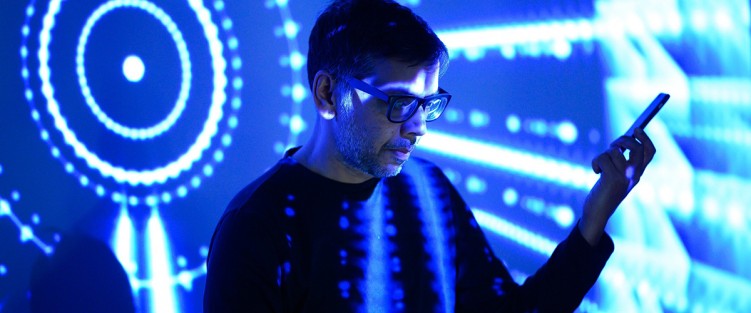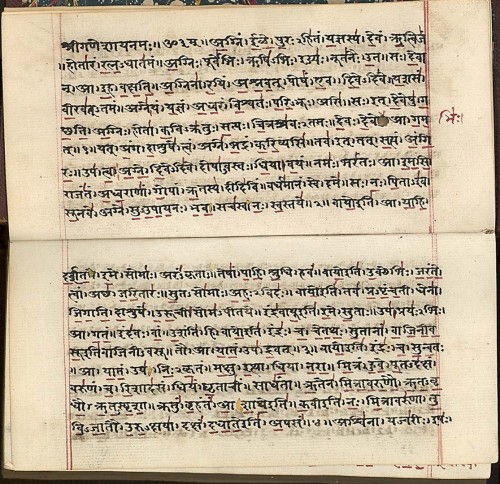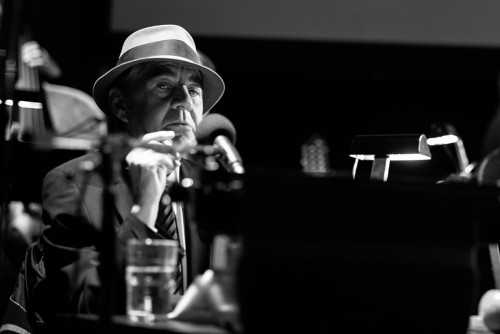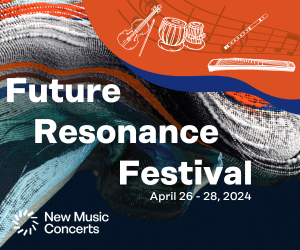 It was quite a pleasant surprise this month, after months of inactivity when I received the October listings to see that there is a variety of different performances coming up in October. If you are a fan of new and experimental music, you will once again be able to indulge in listening to what’s currently going on, even though these events will be limited to livestream. One of the upcoming concerts that caught my eye was a performance by Debashis Sinha, a sound-based artist comfortable working in a variety of media. He combines his experiences as a South Asian Canadian who trains with master drummers from various world music traditions with a love of electroacoustic music and technology. His work, Adeva (version000_01), will be performed via livestream on October 24 in an event produced by New Adventures in
It was quite a pleasant surprise this month, after months of inactivity when I received the October listings to see that there is a variety of different performances coming up in October. If you are a fan of new and experimental music, you will once again be able to indulge in listening to what’s currently going on, even though these events will be limited to livestream. One of the upcoming concerts that caught my eye was a performance by Debashis Sinha, a sound-based artist comfortable working in a variety of media. He combines his experiences as a South Asian Canadian who trains with master drummers from various world music traditions with a love of electroacoustic music and technology. His work, Adeva (version000_01), will be performed via livestream on October 24 in an event produced by New Adventures in
Sound Art and Charles Street Video.
I began my conversation with Sinha by inquiring into how his South Asian Canadian identity has impacted his creative work. Growing up in Winnipeg within the context of a very small Indian community that itself was a mixture of different Indian cultures meant that they all shared a hodgepodge of cultural expressions. “For me growing up, everything was all mixed up together. This has fuelled a lot of the work and the exploration that I do with mythology and storytelling by imagining aspects of my culture, its deities and trying to fill in the blanks.”
He has created a number of works incorporating Hindu mythology in a variety of genres including fixed media, sound installations and art videos. One of his pieces, Kailash, is about Shiva. For this piece, he imagined the summit of Mount Kailash where Shiva dwells and no human is permitted to climb because of it being a holy site. Instead, people circumnavigate the base of the mountain as a kind of pilgrimage. The music he wrote for this piece is his own imaginative version of the sound world on the summit with Shiva sitting in meditation and watching people walking down below. Since one of the manifestations of Shiva is as Nataraja, the dancer who dances the creation so it may continue, he was able to weave in environmental threads as well as rhythms connected to Nataraja’s movements, human footsteps and the cyclical nature of ritual practice.
At this point in his career, he says, he is in the midst of a shift by looking to the future; his October performance will mark a step in this direction. The new work is part of a sound cycle he’s currently working on that involves research into machine learning and artificial intelligence tools for sound. He started the process last winter in Tokyo at the Mutek Japan AI Music Lab where he was fortunate to be the only Canadian present. “We looked at a number of different ways in which neural networks (a form of machine learning that attempts to resemble the human brain) can process sound and musical data, such as MIDI notes, text and visuals.”
Sinha explained that working with machine-learning tools is a very new field in artistic practice with many unknowns, not least of which is not being able to predict what will happen when you work with them. His previous interest in story and mythology also comes into play in this new work. The more he learned about these machine-learning tools, the more he realized that the process parallels discoveries he had already made about deities such as Shiva or Ganesh. “Since they are on such a different plane from humans, how can we possibly understand how they think?” he asks. “If a consciousness operates on eight dimensions, like a deity of some kind, how can we as humans, who operate in either three or four dimensions, understand those thought processes? When we’re confronted with the way these entities think we have to collapse them in a way that makes sense to us. When you collapse something that complicated into something very simple, you lose information or information gets garbled. It lies at the periphery of our abilities.” Exploring this space or gap between human and “deity intelligence” forms the basis of Sinha’s investigation in this new work.
To understand this more fully, I asked Sinha to explain how machine learning tools actually work, particularly when applied to music. He gave an example of a particular tool that only understands music as if it were a Bach fugue. “If you give it a series of notes, it will spit out an answer to you that is mirrored in its understanding of the world, which is a Bach fugue.” The result will be different from the original melody that was put into the system and may or may not be useful. “These processes are not a magic button,” he emphasizes. The creator still needs to sift through the results and use what is interesting.
One of his key interests in using these tools is that since they give results he wouldn’t have come up with on his own, they cause him to question his musical habits. After all, if he were to reject the results he receives, why bother using them in the first place? “I can’t just dismiss them outright, aesthetically,” he said. “I have to question myself, on many levels, including dramaturgically and conceptually. Sometimes I have to give in, and when I do a new story emerges, a story I wouldn’t have possibly come up with.” Another aspect of his research is to explore the shortcomings of these algorithms and the built-in assumptions they have about the world. He gave the example of a recent face recognition algorithm that Twitter released that does not recognize black faces, even though it sees white faces very well. “This brings up all sorts of questions about who is building those tools and the questions they are asking as they build them.”
 Rules-based: His new piece will incorporate text drawn from the Rigveda, the first of the four Vedic texts. Since the Rigveda is very rules-based, Sinha has translated this characteristic into a process whereby he is creating a lot of rules for himself in the ways he engages with the tools. The resultant texts will be combined with rhythmic material and other audio created from the machine learning processes, as well as field recordings he has collected in India. The piece will be semi-improvisational, as he is not interested in replicable live performances, and will be created from the large pool of materials he will have on hand.
Rules-based: His new piece will incorporate text drawn from the Rigveda, the first of the four Vedic texts. Since the Rigveda is very rules-based, Sinha has translated this characteristic into a process whereby he is creating a lot of rules for himself in the ways he engages with the tools. The resultant texts will be combined with rhythmic material and other audio created from the machine learning processes, as well as field recordings he has collected in India. The piece will be semi-improvisational, as he is not interested in replicable live performances, and will be created from the large pool of materials he will have on hand.
Visually we will see a combination of him interacting with his tools along with digitally generated visuals and images from field recordings he has made in Kolkata, India. He’s also building text cards to use so we will know the words that are being used in the resultant “sea of sound.” All these elements will be combined to tell a story about “the liminal space between our perceptions and the perceptions of these N-dimensional entities – “N because who knows how many there are. It’s more about the failure to understand, in the Western sense of understanding, deep truths that nonetheless operate in our lives but that are impossible to articulate.”
We concluded our conversation talking about the reality of livestreamed performances in these times. He said that sometimes these are successful, but feels that performances work best when they completely embrace the shortcomings of the streaming platform. Fortunately in this case, Darren Copeland, one of the producers of the event, has chosen to use the Whereby platform that has much higher audio quality than Zoom does, and this has Sinha very excited. There will also be a Q&A after the performance, either by text or video chat, for listeners to interact with questions and comments about what they experienced.
IN WITH THE NEW QUICK PICKS
OCT 1 to 18: The Music Gallery’s annual X Avant Festival, “Transmissions,” curated by Pratishtha Kohli and Olivia Shortt. All events are free and will be livestreamed. Highlights include abstract punk ensemble OK Miss with Du Yun; 2020 Griffin Poetry Prize-winner Kaie Kellough with Jason Sharp; Toronto’s own indie jazz musician Tara Kannangara; Thin Edge New Music Collective; Anishinaabe singer-songwriter Leanne Betasamosake Simpson; and avant-jazz explorer Mingjia. The festival will also include an interview with Toronto Black music historian emeritus, Norman “Otis” Richmond, a tribute to Toronto’s unique musical adventurer Ron Gaskin, and a gathering of Jamaican-Canadian artists and supporters in discussion around a community meal.
 OCT 7, 8PM: Arraymusic. Livestream Concert with Ryan Driver and The Titillators.
OCT 7, 8PM: Arraymusic. Livestream Concert with Ryan Driver and The Titillators.
OCT 8, 8PM: Freesound. The Canadian Music Centre. A concert of works for clarinet, violin and piano by Canadian composers Jason Doell and Anna Höstman. (Livestream on CMC website).
Oct 17, 7PM: New Adventures in Sound Art/Charles Street Video. “Endosymbiosis: A Live Electronic Music Performance with Liquid Light Imagery by Robert Fantinatto.”
Wendalyn Bartley is a Toronto-based composer and electro-vocal sound artist. sounddreaming@gmail.com.




